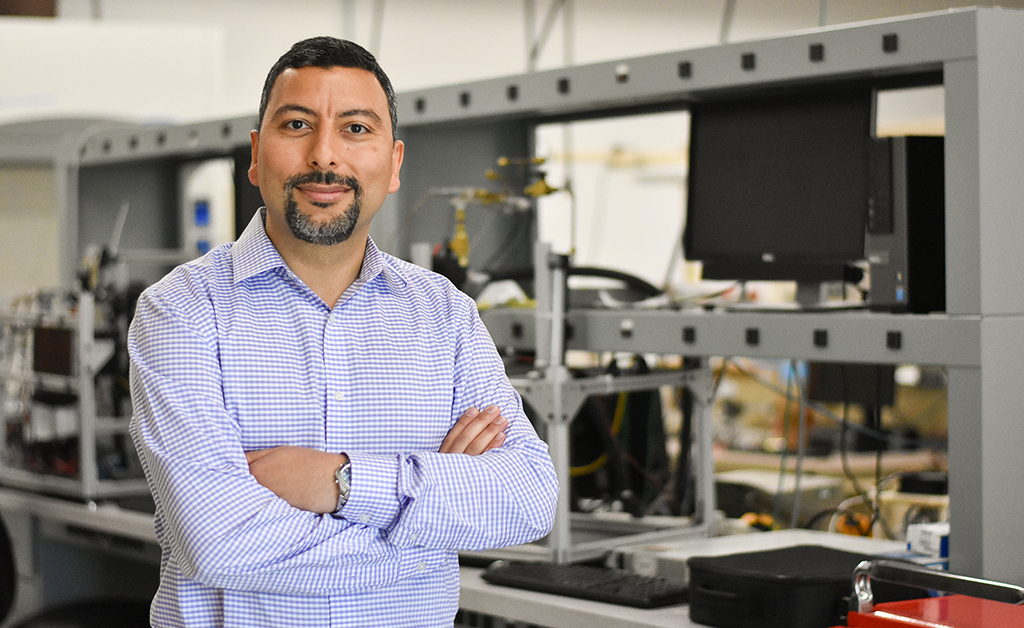
Huseyin Bostanci is at it again with another NASA-funded project. This time, he’s received $50,000 to help revitalize the cabin air in space vehicles and habitats.
The UNT team is one of seven selected nationwide to participate in the Moon to Mars eXploration Systems and Habitation Academic Challenge, which encourages teams to produce or design research findings or functional products that will help NASA in its Moon to Mars space exploration mission.
As part of the challenge, Bostanci and his team plan to investigate a thermal radiator that can use the extremely cold environment in deep space to capture carbon dioxide, ultimately helping to revive the air in these space habitats. It’s a novel method that is likely to be more cost effective and energy efficient than using cryogenic coolers to collect the carbon dioxide.
"We are very excited for the opportunity to continue to collaborate with NASA," said the engineering technology associate professor. "This program is a great way to engage a group of students in the NASA mission critical path for the proposed space technology, and allow them to gain valuable hands-on experience."
Along with Bostanci, the team will involve a group of senior design students; a graduate student; Cable Kurwitz, senior lecturer and associate research engineer at Texas A&M; and NASA experts.